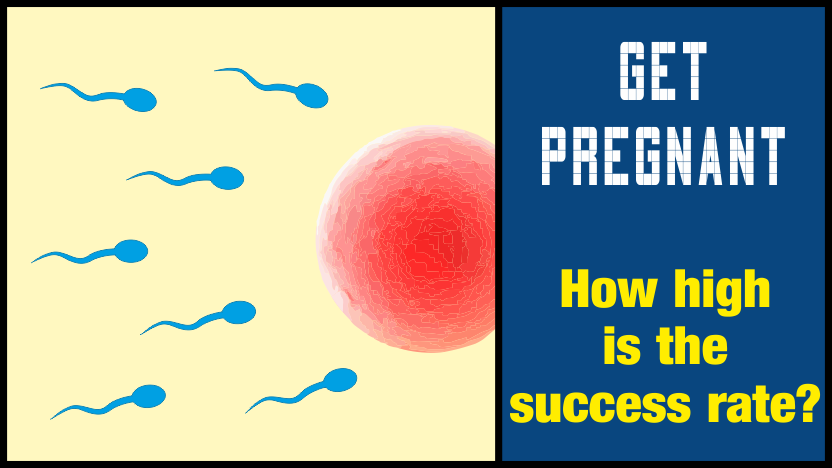
In this article, you will learn, how the ability to get pregnant is related to a woman's age and why this decreases over time. It also shows how the probabilities of the pregnancy calculator are calculated.
Table of contents
You should have a little patience
For many couples, the desire to have their own children arises after a certain time together. At some point, the decision is made to stop using contraceptive measures in the future. A few weeks later, however, many people become disillusioned or disappointed because they are "still not pregnant".
In fact, there is only a certain probability of becoming pregnant in every female cycle, which is by only around 25 % for a young woman under optimal conditions. This means that out of 100 women, only 25 will get pregnant after the first cycle. Experience has shown that most people would estimate the probability to be higher.
Why does the probability decrease with increasing age?
Ova are not constantly being produced; they arise in the womb and have therefore been present since birth. From a certain age, usually towards the end of the 20s or beginning of the 30s, their quality decreases and therefore the probability of successful conception also decreases.
The risk of miscarriage increases
With increasing age, not only the fertility declines, but the risk of miscarriage in case of pregnancy also increases. So after a certain age, it gets more and more difficult to bring a healthy child into the world.
Cycle probability and overall probability
Depending on the age, there is statistically a certain probability per cycle of successfully getting pregnant. If this is 20 %, for example, then this means that after one cycle, 20 out of 100 women will have become pregnant, provided that the conditions are optimal (e.g. intercourse during the fertile days, etc.). Conversely, 80 women have not yet become pregnant. In the next cycle, these remaining 80 women again have a probability of 20 % and so on. This means that the overall probability of becoming pregnant increases over time. After a certain number of cycles, for example, 99 % of women are pregnant, i.e. statistically speaking, one woman in 100 has not yet become pregnant within this period.
Cycle probability
The probability of a successful conception per cycle peaks at the beginning of the 20s and then decreases drastically from the end of the 30s:
| Age in years | Probability | |
|---|---|---|
| Conception per cycle | Miscarriage | |
| 18 | 25 % | 9 % |
| 19 | 25 % | 9 % |
| 20 | 25 % | 9 % |
| 21 | 25 % | 9 % |
| 22 | 25 % | 9 % |
| 23 | 25 % | 10 % |
| 24 | 25 % | 10 % |
| 25 | 25 % | 10 % |
| 26 | 24 % | 10 % |
| 27 | 24 % | 10 % |
| 28 | 24 % | 11 % |
| 29 | 23 % | 12 % |
| 30 | 23 % | 12 % |
| 31 | 22 % | 13 % |
| 32 | 22 % | 14 % |
| 33 | 20 % | 15 % |
| 34 | 19 % | 16 % |
| 35 | 18 % | 17 % |
| 36 | 16 % | 19 % |
| 37 | 14 % | 21 % |
| 38 | 11 % | 23 % |
| 39 | 9 % | 25 % |
| 40 | 7 % | 28 % |
| 41 | 5 % | 30 % |
| 42 | 4 % | 33 % |
| 43 | 3 % | 37 % |
| 44 | 2 % | 41 % |
| 45 | 1 % | 46 % |
These probabilities are based on a Canadian study. Actual individual success rates may vary considerably, so these values should only be regarded as a rough estimation! If in doubt, you should always seek medical advice.
Calculation of the overall probability
To calculate the overall probability, i.e. the probability of a pregnancy occurring within a certain number of cycles, we need some stochastics:
Conclusion
In this article, we have learned that, depending on your age, you should have more or less patience when you decide to have your own children. For some couples, however, it can of course happen very quickly. Secondly, we now know the specific probabilities and the formulas used in the probability calculator.
TO THE PREGNANCY CALCULATOR
